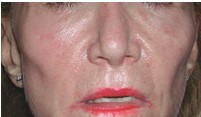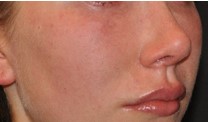Do fat grafts, fillers and facial implants have the same effect on facial appearance?
Fat grafts, fillers (usually hyaluronic acid) and facial implants all add volume to the face. But they do so in different ways and therefore, have different roles in improving facial appearance. Fat grafts and fillers are placed in the soft tissues of the face and are meant to add volume to the skin envelope. Facial implants are placed beneath the soft tissues of the face and on the surface of the skeleton, adding to skeletal volume and projection.
Since the ultimate expression of skeletal or soft tissue structure is reflected on the skin’s surface, some surgeons have used this as a justification for the equivalence and interchangeability of soft (fat and fillers) and hard tissue (implants) augmentation. For example, malar skeletal implants are used to restore cheek soft tissue fullness while fat grafts are used to create malar prominence and definition. Up to a millimeter or so, the visual effect of either augmentation modality may be equivalent depending on the thickness of the overlying soft tissue envelope. However, beyond a minimal augmentation, the visual effects of these modalities are markedly different. This is easily conceptualized when envisioning large augmentations. A large implant placed on the malar bone will make the cheek project more, making the face more defined, angular, and therefore, make the face appear thinner and more skeletal. This is evident in this individual with large malar implants.
Implanting fat into the cheeks will also make the cheek project more, however the face will appear increasingly round, and therefore, less defined and less angular as shown in the example below.
Soft tissue augmentation does not provide the same visual effect as skeletal augmentation and vice versa. For that reason their use is not interchangeable. Each modality has a valuable role in improving facial appearance. In many cases where there are both soft tissue and skeletal volume concerns, they can be complementary.



Leave Comments
You must be logged in to post a comment.